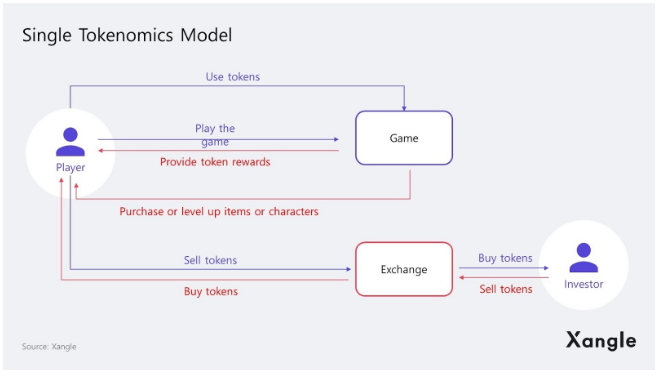- Web3 is the future of gaming.
- Web3 tokenomics has a major role to play in the Web3 gaming space.
Transition from Web2 to Web3
In the present time, the technological environment is all about Web3. The gaming industry is not somehow removed from this advancement. The economic framework of Web2 may not be compatible with Web3 due to the difference in their gaming environment.
Web3 games are based on an open economy, which means that new stakeholders and assets have been introduced to the gaming space.

The above image clearly explains the difference between the key attributes of the in-game economy.
If we talk about asset ownership, in the closed economy the users do not have ownership of the assets and they are required to borrow them from the game companies. In an open economy, the ownership of the assets remains with the user. This enables the user to do whatever they want to do with their asset including monetizing the asset, making secondary content from it, and more.
In terms of the flow of control of currency, game companies have a larger role to play in the Web3 space because when compared to the game companies in the Web2 space, they play a significant part in the circulation of currency along with regulating its supply. The Web3 gaming companies don’t have much control over the currency circulation in the Web3 space. This is largely because investors play a part in opening up ways for the currency to deviate from its original value.
Web3 Game Tokenomics – NFT
In the budding stages of blockchain games, the NFT was the go-to strategy for almost all gaming companies such as Cryptokitties. Understanding the structure of NFTs is not complicated, because they are unique and cannot be replicated. Other user activities such as breeding and item trading take place on the mainnet of Ethereum.
An NFT-based model reduces the workload of designing and managing the game economics, which can be advantageous to game companies. This model gives asset ownership to the user and also saves resources used in building the economic model of the game. Moreover, this also enables the company to take control of the game currency.
If we look at this from the user’s point of view then, it is beneficial for them because the inclusion of the mainnet will significantly improve the trading and upgrading process of their NFTs.
Web3 Game Tokenomics – Single Tokenomics
As the name suggests, only a single token is used in this model. This token is used as both a utility and governance token.

As interpreted from the above image, users have multiple optionsto get their hands on tokens. They can either get tokens from exchanges or they can earn them from their In-game activities. This model not only allows the user to earn tokens but also allows them to take part in the decision-making process.
This model provides multiple benefits to game developers as it simplifies the maintenance and game development process for developers and provides a seamless gaming experience to its users.
Dual Tokenomics
The objective of the development of dual tokenomics is to overcome the limitations set by the single tokenomics model.
As apparent from the name, the dual tokenomics model uses two separate tokens: governance and utility tokens. The use of utility tokens is to facilitate in-game trades and to act as a medium of exchange. The use of governance tokens is to give governing rights to the token holder so that they can participate in decision-making and enjoy voting rights.
The dual tokenomics model was designed with the aim of reducing in-game price fluctuations. Its biggest advantage is that it prevents in-game asset outflow by differentiating between investors and game users on the basis of demand and supply.

